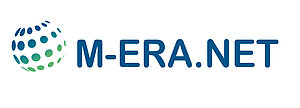
Project title: Electrospun scaffolds with antimicrobial and wound-healing capabilities utilizing bacteriophages, mesenchymal stem cell–derived factors and MXenes
Project acronym: AntiMicroMXen
Project contract number: ES RTD/2024/19
Project coordinator: Fraunhofer Institute for Ceramic Technologies and Systems, Dr. Natalia Beshchasna, Germany
Project partners:
• Hirszfeld Institute of Immunology and Experimental Therapy (IIET PAS), Dr. Honorata Kraskiewicz, Poland
• University of Latvia (IAPS FST UL), Latvia
• NanoCarbonTech (NCT), Dr. Oleksiy Gogotsi, Poland
Project implementation time: 01.06.2024. - 31.05.2027 (36 months)
Total project funding: 1 359 040.00 EUR
Funding for University of Latvia: 300 000.00 EUR, State budget
M-era.Net project info: https://www.m-era.net/lw_resource/datapool/systemfiles/elements/files/809b1a9f-d497-11ee-bbc4-a0369fe1b534/current/document/List_of_funded_projects_2023-Call.pdf
Research manager at the University of Latvia: Dr. Maksym Pogorielov (Advanced Biomaterials and Biophysics Laboratory, IAPS, FST)
Summary:
Despite the relative success of wound healing, still approximately around 10% of all wounds develop severe complications, this mainly refers to chronic and infected wounds. One of the most common and difficult to clear out pathogens found in the wounds is Methicillin-resistant Staphylococcus aureus (MRSA). The formation of chronic wounds escalates the risk associated with the prolonged hospitalization, multiple surgeries and can lead even to leg amputation. Therefore, an ideal wound dressing should provide a complex treatment which counteracts skin infections and promotes regeneration. The aim of AntiMicroMXen project is to develop a new generation of electrospun wound dressings integrated with bacteriophages against S. aureus and pro-regenerative factors derived from immortalized Human Adipose Tissue Mesenchymal Stem Cell (HATMSC) cells combined with antibacterial, hemostatic and reactive oxygen scavenging ability of MXenes.

 CONFERENCE
CONFERENCE